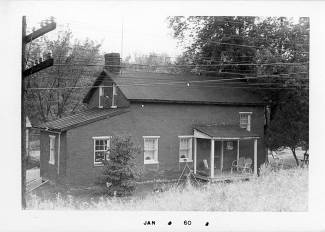Collection Name
About
This lockhouse located at Lock 31 was built of bricks in 1833 by Peter Mathias for $1,031.40.
Weverton is named after Caspar Willis Wever who was a bridge designer and builder for the B&O Railroad and a strong opponent of the canal. He had acquired a large tract of land in the area and was attempting to develop an industrial village that would use water power from the river. During the devastating Asiatic cholera epidemic that began in late August continued into the fall of 1832, the canal company sought to lease a long-empty mill building owned by Wever near this location for a “hospital.” (In reality such facilities were simply a place to which sick laborers were taken and given minimal care until they either died or recovered.) However Wever’s fee for the lease was so exorbitant that the canal company did not even seriously consider it.
Mile 57.8
Lockhouses were constructed in order to house the lockkeepers in a location where they could tend the lock 24 hours of the day. Most of the Lockhouses along the C&O Canal follow the original specifications laid out by the Chesapeake & Ohio Canal Company in 1828. The lockhouses were to be 30’x 18’ one and one half story structure made of stone with a dirt floor basement. The first floor would be one room as well as the second and the chimneys would be located on the gable ends of the structure. By 1836 the specifications had changed from one room stone structures with gable end chimneys to two room structures of either brick or stone with central chimneys. They would also add plastering, closets and paint to the Lockhouse specifications.
